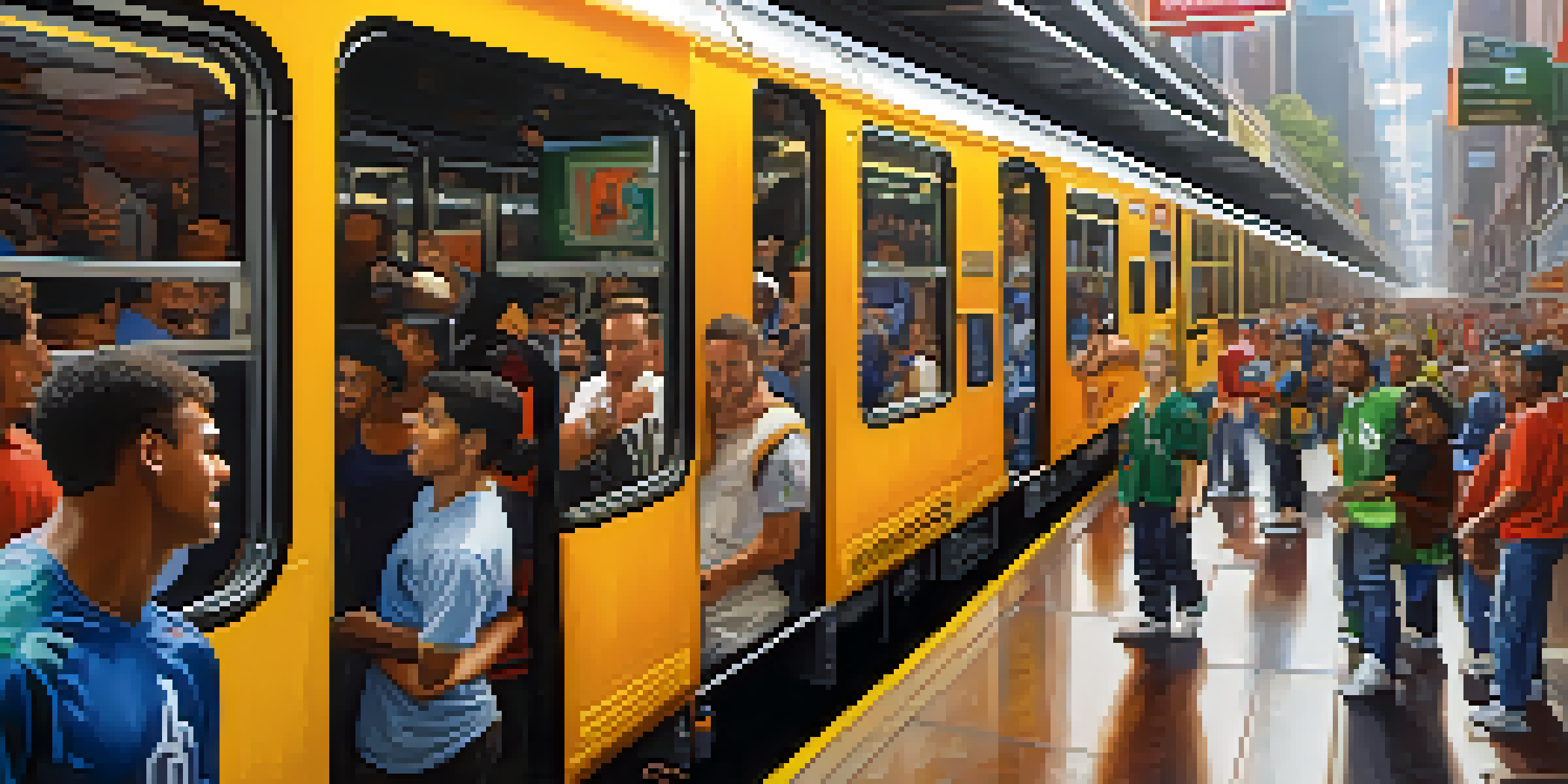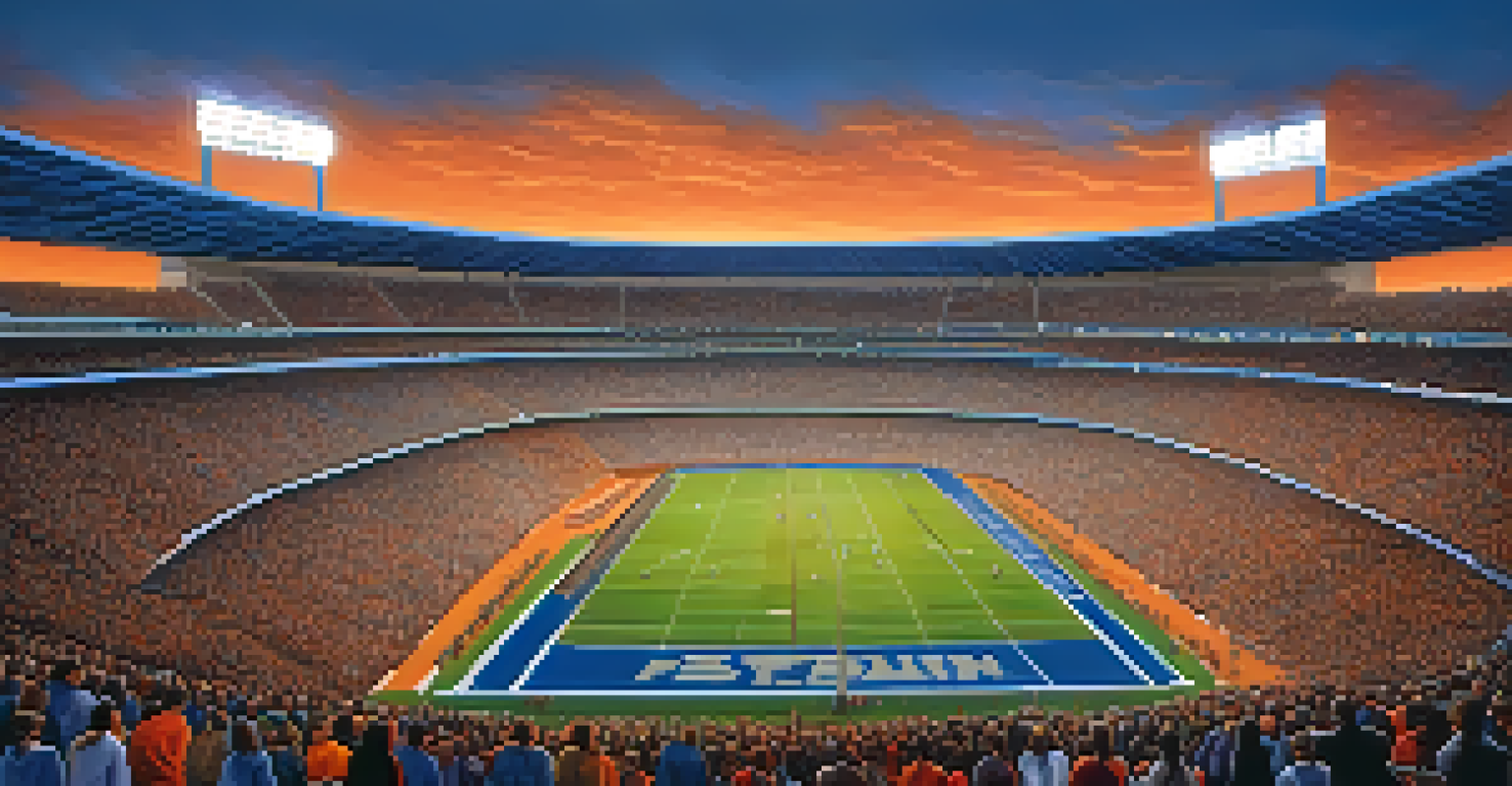Navigating Transportation Options for Sports Event Travel

Understanding Your Transportation Needs for Sports Events
When planning to attend a sports event, your transportation needs are a crucial factor. Consider the distance to the venue, the number of people in your group, and any specific accessibility requirements. These elements help you determine whether you need a personal vehicle, public transport, or a rideshare service.
The journey is the destination.
For instance, if you're traveling with a large group, renting a van might be more economical and convenient. On the other hand, if you're solo, public transportation can be a cost-effective choice. Understanding these needs upfront can save you a lot of time and stress on event day.
Ultimately, knowing your transportation needs sets the stage for a smooth journey. It helps you weigh your options and make informed decisions that align with your preferences and budget.
Exploring Public Transportation Options
Public transportation can be a reliable and budget-friendly option for getting to sports events. Many cities offer robust systems of buses, subways, and trams that can take you right to the venue. The best part? You won’t have to worry about parking!

For example, if you're attending a game in a bustling city, using the subway can save you time and energy. Just check the schedule and plan your route to avoid any last-minute surprises. Plus, riding public transport can be a fun way to connect with other fans heading to the same event.
Assess Your Transportation Needs
Understanding your group size, distance, and accessibility can help you choose the best transportation method for sports events.
However, it's essential to familiarize yourself with the public transit system beforehand. Knowing the routes, schedules, and potential delays can make your experience smoother and more enjoyable.
The Convenience of Rideshare Services
Rideshare services like Uber and Lyft have transformed how we travel, especially for events. They offer a convenient and often quicker way to reach your destination without the hassle of driving and parking. Simply request a ride from your smartphone, and you’ll be on your way in no time.
Life is a journey, not a destination.
Imagine you’re running late for a big game—hailing a rideshare can be a lifesaver. You can avoid the stress of navigating traffic and finding a parking spot. Just be sure to check estimated arrival times and surge pricing during peak hours.
Rideshare services also offer flexibility, as you can choose to be dropped off right at the venue. This option can make your arrival experience much more enjoyable, allowing you to focus on the excitement of the event.
Benefits of Carpooling for Sports Events
Carpooling is not only eco-friendly but also a budget-friendly way to travel to sports events. By sharing the ride with friends or fellow fans, you can split fuel and parking costs, making it more economical for everyone. Plus, it adds to the fun of the event as you bond with friends on the way.
For instance, organizing a carpool can create a shared experience—everyone can get excited about the game while chatting and playing music together. It also reduces the number of cars on the road, helping to ease traffic congestion around the venue.
Plan for Post-Event Travel
Having a transportation strategy for after the event can save you time and reduce stress when leaving a crowded venue.
However, it’s important to coordinate with your carpool group regarding departure times and meeting points. This ensures that everyone arrives on time and can enjoy the event without the stress of travel.
Driving Yourself: Pros and Cons
Driving yourself to a sports event has its advantages, such as having full control over your schedule and the comfort of your own vehicle. You can leave when you want, pack your snacks, and even listen to your favorite playlist. This can create a personalized experience on the road.
However, driving also comes with challenges, particularly around parking. Many venues offer limited parking spaces, and fees can be quite steep during major events. Additionally, dealing with traffic can add stress to your journey, especially if you’re running late.
Weighing these pros and cons will help you decide if driving is the right choice for your sports event. If you opt to drive, be sure to plan your route and parking options in advance to minimize any surprises.
Timing Your Travel to Avoid Last-Minute Rush
One of the most critical aspects of sports event travel is timing. Arriving early can help you avoid the mad rush of fans arriving just before the game starts. It also gives you time to explore the venue, grab a bite to eat, and soak in the atmosphere.
For example, if the event starts at 7 PM, consider leaving home by 5 PM. This cushion allows for unexpected delays, whether it's traffic or a last-minute call to grab a friend. Arriving early can transform your experience, letting you enjoy the event rather than stressing about being late.
Timing is Key for Smooth Travel
Arriving early allows you to avoid last-minute rushes and fully enjoy the event atmosphere.
Remember, the goal is to enjoy the game and the overall experience. Allowing plenty of time for travel ensures that your focus can be on the excitement ahead, rather than the logistics of getting there.
Planning for Post-Event Transportation
Just as important as arriving is planning your transportation after the event ends. With thousands of fans leaving at the same time, it’s wise to have a strategy in place. Whether you choose public transport, rideshare, or carpool, knowing your options can save you a lot of hassle.
For instance, if you plan to use a rideshare service, consider walking a few blocks away from the venue to avoid the surge in demand near the exit. This simple move can significantly reduce your wait time and help you get home faster.

Additionally, if you’re driving yourself, be prepared for heavy traffic and potential delays when leaving the venue. Having a post-event plan ensures that your experience remains enjoyable from start to finish.